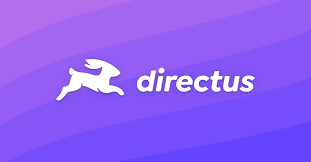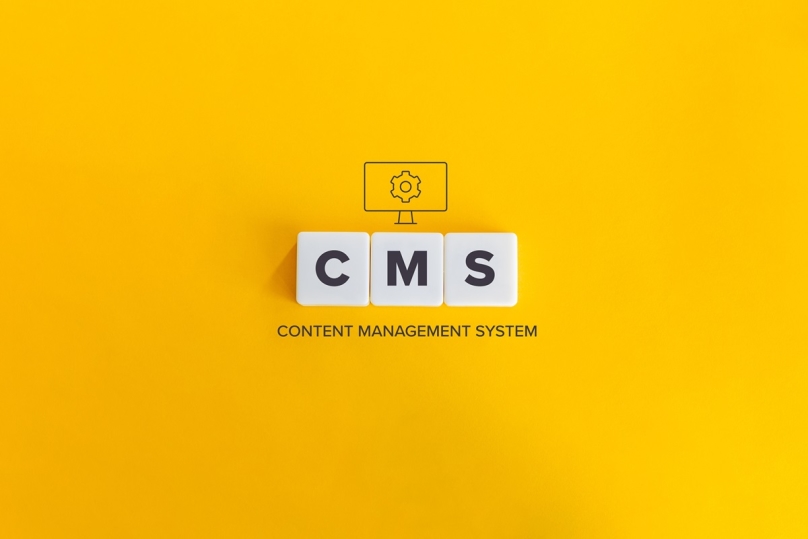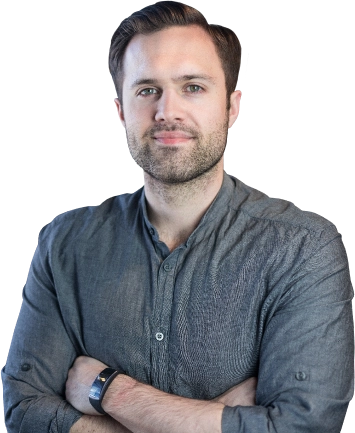Introduction
JavaScript content management systems (CMS) have exploded in popularity over the last decade thanks to the flexibility of JavaScript and its ecosystem. Javascript based cms options offer developer-friendly tools to build, manage, and distribute all types of content. cms in javascript provides extensible architectures to customize experiences while avoiding vendor lock-in. There is a robust selection of platforms for JavaScript CMS use cases ranging from blogs to documentation portals to full-stack web apps. This list highlights 10 leading open-source CMS frameworks based on GitHub stars for their codebases and an overview of their fundamental capabilities and ideal use case fits.
What headless CMS javascript framework is?
A best headless CMS javascript framework is a Javascript-based content management system that provides backend content infrastructure and delivery APIs, separate from any front-end presentation layer.
Some key characteristics of a headless JS CMS framework:
JS headless is a JavaScript framework. Its core codebase is written in Javascript, allowing it to run in Javascript environments like Node JS. This allows flexibility to run on the front, back, or anywhere between.
It provides headless content management functionality for authoring, organizing, and delivering content through developer-friendly APIs. This decouples content from the presentation.
It typically handles backend CMS infrastructure like storage, authentication, routing, caching, search indexes, etc. This allows frontend apps to consume purely content APIs.
It is modular and extensible, allowing custom plugins and integrations to expand functionality as needed.
The content APIs exposed are platform/frontend agnostic. This means content can be consumed across the web, mobile, IoT, and other interfaces.
The headless architecture enforced by these JS frameworks allows greater flexibility and omnichannel content delivery and separates concerns between backend engineers and frontend developers. They represent a shift towards API-driven modular content management.
Typical use cases of CMS frameworks
Content management systems (CMS) provide a centralized platform to create, manage, and deliver content. JS CMS frameworks specifically offer backend content infrastructure and headless APIs that can be used to build modern applications, websites, and other digital experiences. Some of the most common use cases of JS CMS frameworks include the aspect presented in the next paragraphs.
Building Web and Mobile Applications
One of the main uses of headless CMS frameworks is to power the content in web and mobile apps. The CMS allows you to focus on developing the app UI and presentation layer while it handles all the backend content delivery and infrastructure. Famous examples are building custom React-based web apps, Angular SPA experiences, and native mobile apps that all pull structured content from the CMS.
Managing Content APIs
Modern CMS platforms provide developer-friendly APIs that applications can use to retrieve content. This allows the CMS to act as the main hub for all content while various frontends consume that content. JavaScript frameworks like Contentful and Strapi make it easy to build configurable content APIs with authentication, caching, webhooks, and more.
Integrating Content Across Platforms
Headless architecture allows content to be centralized in one platform while being exposed everywhere via APIs. This omnichannel content delivery lets you reuse the same content across the web, mobile, IoT devices, digital signage, smart speakers, and more. JavaScript CMS frameworks include integrations and SDKs that facilitate platform distribution.
Scaling Content Across Channels
As companies grow, they often need to scale content across new channels and touchpoints. Headless JS CMS platforms provide an abstraction layer that allows frontends to come and go without engineering changes on the content backend. This creates a future-proof content infrastructure.
Separating Frontend Code from Backend
Decoupled CMS architecture enforces a separation between ephemeral front-end code and backend content that persists. This improves developer experience, helps achieve CMS and codebase agility, and reduces risk.
Matt Sadowski
CEO of Mobile Reality
Transform Your Business with Custom AI Agent Solutions!
Leverage our expertise in AI agent development to enhance efficiency, scalability, and innovation within your organization.
Expert development of modular and scalable AI software solutions.
Integration of Large Language Models (LLMs) for advanced capabilities.
Customized AI agents tailored to your business needs.
End-to-end support from design to deployment.
Enhance decision-making and operational efficiency with AI.
The unique selection of the top ten open source javascript CMS frameworks in 2025
CMS with JavaScript | Github | Company / Developer | HQ |
San Francisco, California, the US | |||
Singapore | |||
Grand Rapids, Michigan, the US | |||
Brooklyn, NY, the US | |||
San Francisco, California, the US | |||
Toronto, ON, Canada | |||
Sydney, Australia | |||
London, the UK | |||
San Francisco, California, the US | |||
— |
1. Strapi

Strapi is a flexible, developer-first open source headless CMS focused on custom API creation. It features an intuitive admin panel where content editors can manage content that feeds customizable APIs serving data to applications, sites, and other platforms. As a headless CMS, it decouples content management from content display.
Strapi Key Features
Developer-first CMS optimized for API creation needs including custom data structures
APIs fully adaptable to content requirements supporting multiple formats like JSON, XML, CSV based on project needs
Database agnostic supporting SQL, NoSQL, cloud databases enabling optimal choices
On-premise self-hosted option or cloud deployment on platforms like Heroku, AWS
Strapi Use Cases
Strapi empowers developers to quickly build customizable APIs and manage content for delivery to websites, mobile apps, smart devices, and more without complex infrastructure setup and maintenance. Its flexibility makes it a great choice for teams creating content across multiple platforms.
2. Ghost

Ghost is an open source content management system optimized for online publications and journalistic content. It provides an intuitive, minimalist editing interface combined with powerful content management capabilities for single authors and commercial publication teams alike.
Ghost Key Features
Intuitive editor interface providing seamless writing and content creation abilities ideal for blogging
Integrated scheduler enabling content visibility control based on set dates and times on posts and pages
Themes marketplace with free and paid options to apply designs and customizations
SEO best practices baked into the platform to optimize content discoverability
Ghost Use Cases
Ghost offers a purpose-built CMS solution for publishing user-friendly blogs, online magazines, newspaper sites, personal branding sites and other editorial content sites needing streamlined content production and distribution tools.

Payload CMS offers an extensible open-source headless content management system built on Node JS, Express, and MongoDB. Its modular architecture and developer-focused configuration make it fully customizable to specific project needs, ranging from content types to workflows.
3. Payload CMS Key Features
Modular components for highly adaptable architecture catering to diverse project requirements
Custom post types, fields, and workflows to model content according to application needs
Granular access control permissions customizable to user roles within the system.
Payload CMS Use Cases
Payload empowers developers with complete content management control, allowing them to build fully tailored CMS solutions based on application requirements rather than being constrained by rigid off-the-shelf products.
4. Directus

Directus offers an open-source, real-time headless content management system allowing flexible SQL and NoSQL database content management. Its admin app enables intuitive direct database interactions while its modular architecture delivers content through customizable APIs.
Directus Key Features
Customizable database manager providing a user-friendly interface for directly accessing and modifying database content across SQL and NoSQL options
Real-time preview editing capabilities allow instantly viewing content changes in context during the authoring process, improving productivity
Granular permissions system at the collection, row, and field-level to control user and group data access appropriately based on roles
Extensive API layer supports GraphQL and REST APIs to feed content to websites, apps and other platforms based on specific project requirements
Directus Use Cases
Directus offers developers and teams a flexible database manager and CMS for building internal tools and dashboards or headless architecture public sites. Its modular system integrates well with a range of projects.
5. Decap CMS

Decap CMS offers an open source Git-based headless content management system designed for static websites built with generators like Gatsby, Hugo and Jekyll. It features an intuitive editor and built-in Git workflow.
Decap CMS Key Features
Intuitive editor interface for authoring content,
Built-in Git workflow based on pull requests, enabling version control and rollbacks during content creation workflows,
Seamless integration for sites hosted on Netlify allows easier production deployments.
Decap CMS Use Cases
Decap CMS is ideal for teams building static websites powered by generators like Gatsby, Hugo, and Jekyll that require a streamlined CMS environment for content editors to produce content collaboratively. The Git-based workflow makes it easy to track changes.
Matt Sadowski
CEO of Mobile Reality
Dynamic and Scalable Web Applications with React.js
We craft high-performance, interactive web applications with React.js to help businesses deliver exceptional user experiences and drive growth.
Custom React.js web applications tailored to your business goals.
Fast, responsive, and scalable solutions optimized for performance.
Integration of AI agents to automate workflows and enhance user interaction.
Expertise in building progressive web apps (PWAs) and complex UI/UX interfaces.
Seamless integration with APIs, cloud services, and third-party tools for maximum scalability.
6. Tina CMS
Tina CMS offers an open-source toolkit for integrating inline editing features into React-based websites and applications. This enables direct on-page updates, avoiding separate admin environments.
Tina CMS Key Features
React components for in-context editing enable immediate updating of text and media on pages, facilitating intuitive changes. No need to navigate elsewhere.
Minimalist library integration via React Hooks averts complex build setups. Tina builds editing abilities on existing sites with minor tweaks, avoiding overhaul.
Live preview editing shows unsaved amendments in real time before publishing. Reduces reviewing steps, allowing rapid create-verify-deploy cycles.
GraphQL data source integration leverages existing APIs to feed content from decoupled backends
Authentication and access controls available to limit editing abilities per user roles
Tina Shadowing allows granular editability down to the component level based on templates
Tina CMS Use Cases
Tina CMS is ideal for React developers looking to build sites with integrated editing functionality without a separate backend CMS.
7. KeystoneJS

Keystone JS offers an open source headless CMS and full-stack web application framework built entirely in Node JS. It features auto-generated GraphQL APIs, an intuitive Admin UI, user access controls, and database integration supporting simple prototypes and complex solutions.
KeystoneJS Key Features
Auto-generated GraphQL API accelerating development by providing out-of-box backend content delivery capabilities
Admin UI dashboard and granular access control systems enabling secure and permission content authoring
Seamless integration with MongoDB, PostgreSQL and other SQL & NoSQL databases
KeystoneJS Use Cases
Keystone JS supports diverse applications with its headless CMS, auto-generated GraphQL API, admin dashboard and database integrations powering full-stack solutions. Websites leverage Keystone's content authoring and permission content delivery abilities to front-ends for streamlined CMS implementations.
8. Webiny

Webiny offers an open-source headless content management system and complete stack development framework for JavaScript focused on a positive developer experience through abstractions handling infrastructure, security, and components.
Webiny Key Features
Headless CMS capabilities enable decoupled content authoring and omnichannel distribution workflows catering from websites to apps
Visual page builder accelerator empowers drag and drop assembly of pages, layouts, and themes, minimizing custom coding needs
Integrated security schemes injection guard infrastructure elements and app components safeguarding data integrity
GraphQL APIs provide flexible content delivery while SDKs streamline app builds integrating Webiny capabilities
Multi-tenancy allows serving multiple isolated clients from the same Webiny instance lowering costs
Webiny Use Cases
Webiny enables accelerated development of full stack JavaScript applications across diverse use cases where its comprehensive abstractions help minimize time spent on backend infrastructure, security, and headless content workflows.
Typical use cases include e-commerce sites, web apps, documentation portals, personal sites, and proprietary back office tools. The framework caters to early-stage startups and large enterprises. Careful compliance with standards ensures interoperability and avoids vendor lock-in across the technology stack.
9. Sanity

Sanity is an open-source, real-time headless content management system that empowers omnichannel structured content workflows ranging from web and mobile apps to digital signage solutions.
Sanity Key Features
Customizable structured content models enable fine-tuning schemas matching content types
Flexible collaboration abilities allow concurrent authoring with rich editorial workflows
Global CDN distribution powers content to devices and apps worldwide with low latency
Portable Structured data sets allow moving Sanity projects across regions and accounts
Sanity Use Cases
Sanity streamlines authoring and management of structured content for distribution across experiences catering from marketing sites to apps to digital displays. It shines when handling complex, evolving content models in collaborative teams producing high-value media and editorial assets.
10. SonicJS

SonicJS provides an open source, developer-focused headless content management system catering to rapid custom CMS builds powering sites, apps and static site generators through its declarative data modeling and preset admin interface.
SonicJS Key Features
Declarative data models enable easily tailoring JavaScript object schemas to content needs
Auto-generated admin dashboard accelerates authoring environments to manage custom models
GraphQL and REST APIs deliver content from databases to apps and sites
Modular architecture allows extending capabilities as needs grow
Integrates out-of-the-box with AWS, Netlify and Heroku for faster deployments
SonicJS Use Cases
SonicJS simplifies building custom sized CMS solutions from lightweight site engines to scalable platforms based on JavaScript across the stack. It shines for developers prioritizing control and rapid iteration over pre-packaged constraints.
Conclusion
JavaScript has cemented itself as the lingua franca for full stack development ranging from frontend experiences to backend infrastructures and everything in between. Its flexible ecosystem enabled the rise of CMS solutions catering from personal blogs to enterprise media hubs. The overview of these top 10 open-source JavaScript CMS frameworks based on GitHub stars covers a spectrum of options fitting diverse needs and use cases.
While traditional legacy CMS platforms still power many sites, modern JavaScript solutions offer refreshed abstractions to accelerate development velocity. Evaluating specific project goals around customization needs, timelines, security requirements, and potential scale will help determine the ideal selection from these and other emerging frameworks. The continued widespread adoption of JavaScript will drive further innovation in this ecosystem, expanding possibilities for developers.
Explore More Development Tools Rankings
Choosing the right tools and libraries can significantly enhance your development process. At Mobile Reality, we analyze and rank the best tools for various technologies, ensuring you have the insights to make the best choices. Dive into our curated lists to discover more essential resources:
- Top 5 React Native tools and libraries in 2025
- Top 5 React.js tools and libraries for development in 2025
- Top 5 Vue.JS tools and libraries in Web Development in 2025
- Top 5 React.JS tools and libraries in 2024
- Top 5 React Native tools and libraries in 2024
- Top 5 Vue.JS tools and libraries in 2024
- Top 5 Node.JS Backend Tools and Libraries in 2024
- Top 3 cloud (AWS / Azure) services 2024
- Top 5 Node JS Packages and Tools by Mobile Reality in 2025
Whether you’re working with React.js, Node.js, or other popular frameworks, our rankings and reviews are crafted to help developers maximize productivity and build exceptional software. If you’re looking for personalized recommendations for your next project, reach out to our team. We’re here to empower your development journey with cutting-edge tools and expert guidance.





